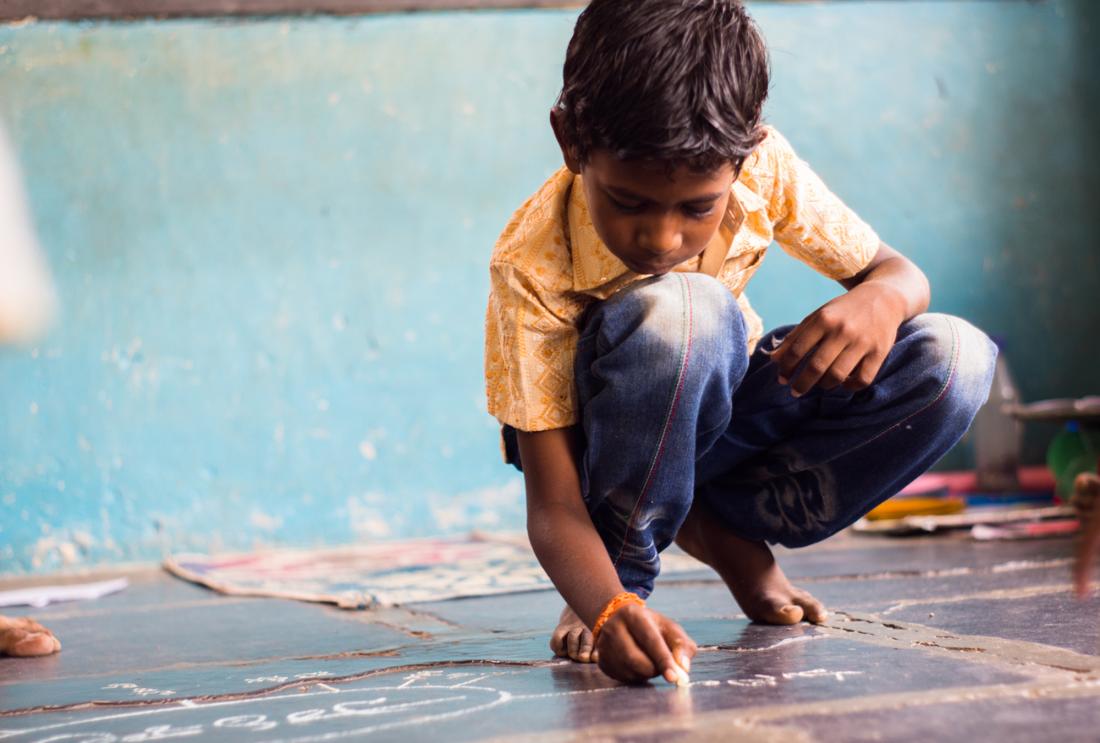Using Learning Camps to Improve Basic Learning Outcomes of Primary School Children in India
- Children
- Students
- Student learning
- Monitoring
- Training
- Tracking and remedial education
Primary school enrollment has increased significantly around the world in recent decades, while learning levels have remained low. Previous randomized evaluations have shown that Pratham’s Teaching at the Right Level (TaRL) approach effectively increases mastery of basic skills in literacy and numeracy. To test whether TaRL can be implemented at-scale in government schools, researchers partnered with Pratham and the Government of Uttar Pradesh to evaluate the impact of high-intensity learning camps during school hours. The model proved highly effective, bringing about large improvements in student’s language and math learning levels.
Policy issue
Primary school enrollment has increased significantly around the world in recent decades, while learning levels have remained low. While children are moving from one grade to the next, few actually master the grade-level competencies expected of them. This could be attributed to a number of factors, including large class sizes, a shortage of qualified teachers, unsuitable pedagogy and curriculum, and pressure on teachers to complete the prescribed syllabus. Targeting lessons to the learning levels of students is one pedagogical approach to addressing the challenge of low learning levels.
This approach, known as Teaching at the Right Level (TaRL), has been rigorously tested in several contexts and was found to be effective in Gujarat, Maharashtra, Uttar Pradesh, Bihar, and Haryana.
While the evaluation in Haryana found that government teachers, with the right training and support, can effectively implement TaRL, some regions may have a teaching culture that is too weak to support a teacher-led program. Can the TaRL approach be effective when implemented in government schools by Pratham staff and trained volunteers at scale?
Context of the evaluation
Uttar Pradesh is the most populous state in India, with a population of 199.8 million as of the 2011 Census of India. Learning levels are particularly low in the state: as of 2011, only 48 percent of children in grades 3-5 could read a grade-1 level text, the second-lowest percentage of all Indian states.
The evaluation took place in two rural districts in Uttar Pradesh: Sitapur and Unnao. In 2016, learning levels in math and literacy in Unnao were near the state average and slightly lower in Sitapur.
Pratham, one of India’s largest NGOs, has developed an approach in which instructors teach basic language and mathematics according to the learning level of the children, rather than a prescribed age-grade syllabus. J-PAL has partnered with Pratham to evaluate different versions of the approach since 2001.

Details of the intervention
To test whether TaRL could be implemented by Pratham at-scale in government schools, researchers partnered with Pratham and the Government of Uttar Pradesh to evaluate the impact of Pratham-led high-intensity learning camps during school hours.
Learning camps were intensive bursts of teaching- learning activity using the Pratham methodology and administered primarily by Pratham volunteers and staff during school hours when regular teaching was temporarily suspended.
On “camp" days, Pratham team members, assisted by trained village volunteers, grouped children in grades 3-5 by learning level rather than grade and taught Hindi and math for about 1.5 hours each.
Schools in Sitapur and Unnao were randomly assigned to one of four groups, with approximately 120 schools in each group.
- 10-day camp: Schools received four 10-day rounds of camp plus an additional 10-day camp during summer;
- 20-day camp: Schools received two 20-day rounds plus an additional 10-day camp during summer;
- Materials-only: Pratham provided schools with the TaRL learning materials but no additional academic support.
- Comparison group: Schools did not receive camps or materials.
The learning camps were conducted from 2013-2014.
Researchers measured children’s performance on the Annual Status of Education Report (ASER) assessment, which measures mastery of basic skills by classifying children into the following learning levels:
- Language: Beginner (cannot recognize letters); Letter recognition; Word recognition; Paragraph reading (grade 1 level text); or Story (grade 2 level text).
- Math: Beginner (cannot identify single-digit numbers); One-digit number recognition; Two-digit number recognition; Subtraction; or Division.
Results and policy lessons
The impact of Pratham’s learning camp model is the largest measured of any TaRL model evaluated.
Learning camps: The 10-day camp and 20-day camp had similar impacts, with test score gains in language and math of 0.7 to 1.0 levels, on average.
At baseline, 39 percent of children could not recognize letters, and 15 percent could read a paragraph or story. At endline, there was little progress in the control group: 24 percent of children could not recognize letters, and 24 percent could read a paragraph or a story. In contrast, 8 percent of students who participated in the learning camps could not recognize letters, and 49 percent could read a paragraph or a story. This means that the learning camps were twice as effective as regular instruction at teaching students to read a paragraph.
To put this into context, learning levels in the camp schools went from close to the lowest achievement levels in India to the learning level of the third highest achieving state in the country (Haryana).
Materials-only: The materials-only intervention had a small impact on math test scores, with an increase of 0.05 learning levels, and had no impact on language test scores.
Use of results: As of 2017, this in-school learning camp model has been implemented in 4,210 schools across India, reaching over 200,000 children.


